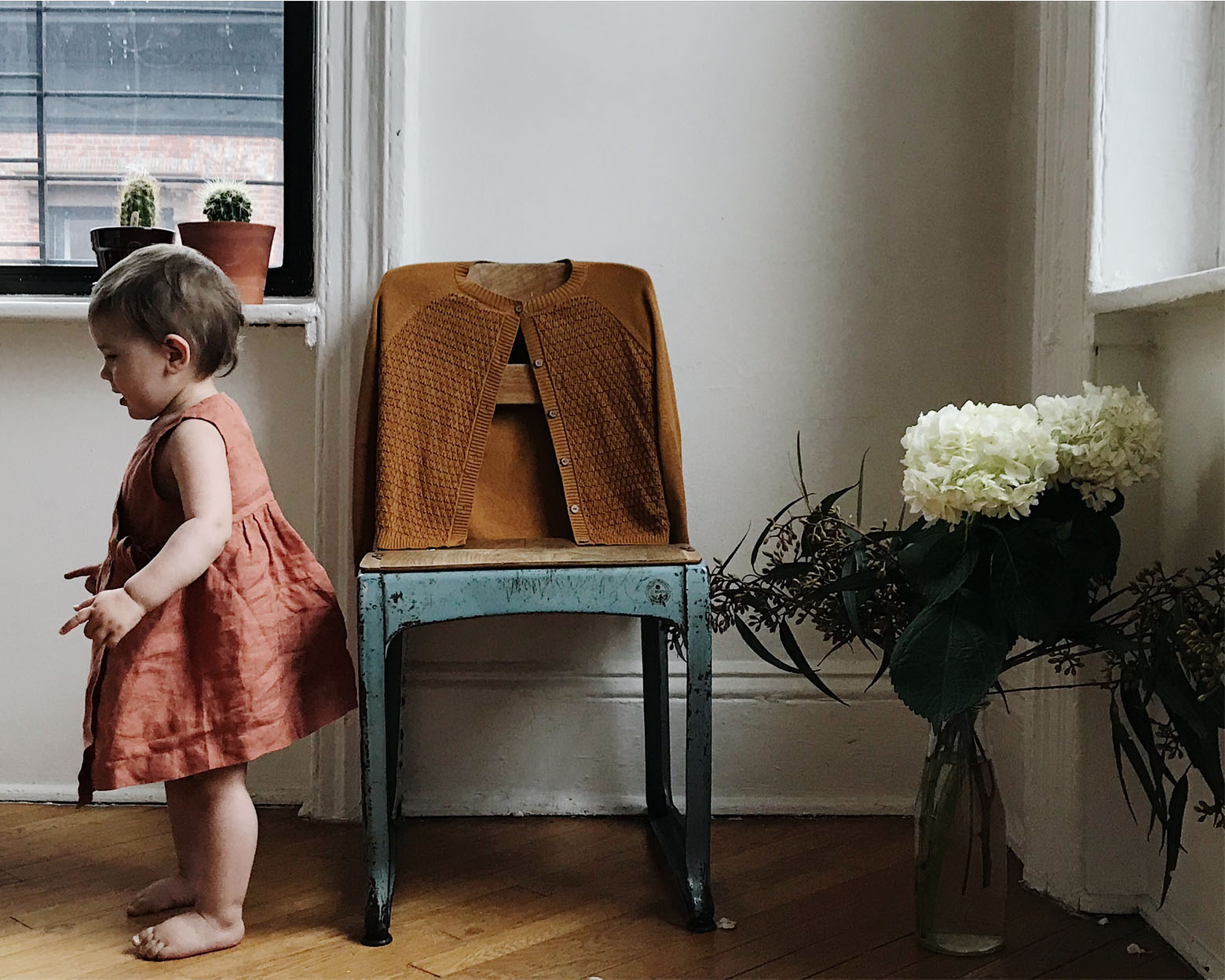
Last year I met a woman called Justine. We first connected through Instagram, and soon thereafter we met in real life and I guess you can say we both felt an instant and very honest connection to each other. We care for a lot of the same things, share the same perspective on many subjects and are both women who are trying to find our way through motherhood as well as life in general.
Justine is the mother of two children, Hunter who’s 7 and Vivienne who’s 5. They live in Connecticut from where she runs her online children’s shop, CLOTH which she founded 18 months ago. Here she carries a small selection of children’s clothing, all handpicked with a lots of thought and love by Justine herself.
One of the things we share a big interest in, is children’s clothing. Not just any children’s clothing, but clothes that are produced under sustainable conditions, let the child move, be itself and play and items that are of such good quality that they can be worn over several seasons and passed down to siblings. Last time I wrote a post about a sustainable children’s wardrobe a lot of you readers responded very positive and asked for more information on the subject (you can read the post right here) and so I decided to ask Justine a few questions about her view on children’s clothing and on how you as a parent can focus on building a capsule wardrobe for your child, which in the end will mean buying lesser pieces that are all being used.
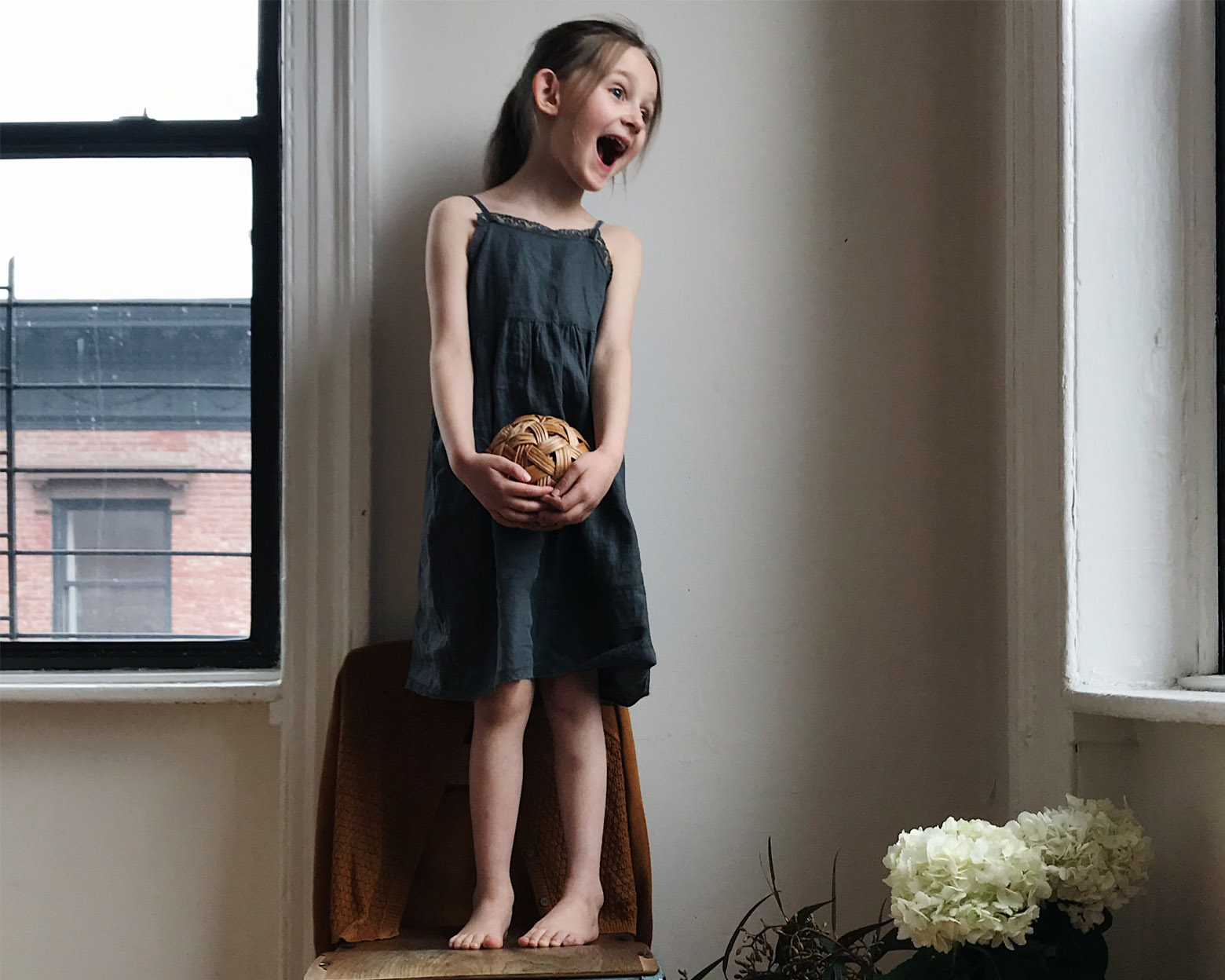
What does children’s clothing mean to you?
To me, children’s clothing goes beyond just throwing clothing on your kids each day to venture out in the world. It’s about choosing how to responsibly dress your kids, with with and why. Clothing is adornment and should be respected as such. I often think of how a clothing item or doll will become an heirloom piece in your family’s history and I can get moved deeply when I inspect a piece of clothing. The thread, hand embroidered work, the texture of fabric and cloth. I think about the person who grew the cotton or tended the animal for wool or alpaca. It may sound crazy but that’s is how designs affect me. To me, they’re works of art.

Could you explain the concept of a capsule wardrobe?
Simply said; A capsule wardrobe includes only high-quality essentials that your child can wear over and over again. Items that can be mixed and matched.
Why is worth building a capsule wardrobe for your child?
There are a lot of parents who buy ‘fast fashion’ clothing items because they are cheap and disposable. When you invest in high-quality pieces that can be used over and over again and even passed down to a sibling, you are actually teaching your child to appreciate the fabric of a clothing item or the significance of how it was made and by whom. When you only buy children pieces they’ll use and need, you’ll end up having more money for exploring and living (less money spent on clothes that never get worn) which again hopefully will lead to contentment and living a slower life filled with enjoyment. At least that is the goal.
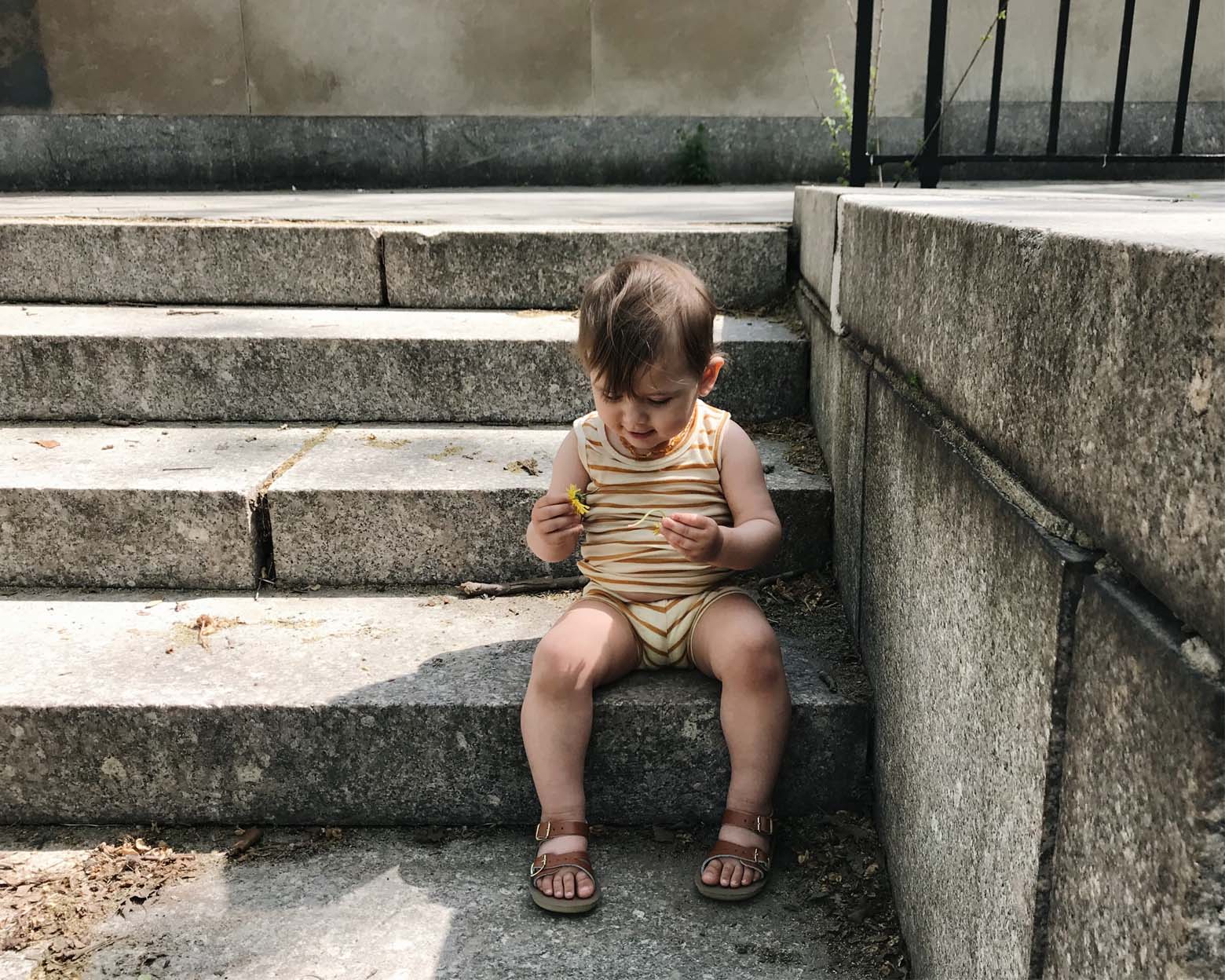
How do you teach the concept of timeless style and longer lasting clothing items to children?
I have a boy and girl. They are both very different in their style, but one thing I have always expressed early on with my kids is the idea of how you present yourself to the world. There’s a time and place for glitter and hot pink, just not all over your shirt, so we compromise with pops of color on nails or sticky diamond gems on the cheeks or a cool pin or patch to iron onto a backpack. I have had some people argue that the child doesn’t get to make choices. Of course they do, they have just been trained a bit in style early on, so it’s engrained in them. We lay out our outfits the night before (something I have been doing since my teenage years:). They get to concisely make choices about what goes with this or that.
It’s been interesting to see how each of their styles has evolved over the years. My son has always been quite casual, in that he like comfy pants and Breton striped shirts. So instead of buying him sweatpants and tees with cheap logos, we’ve had to journey together through what he likes. I ask questions, show him photos online for approval, and never force him to wear something. He has a very simple wardrobe consisting of greys, navy, toffee, black. He leans toward organic, cotton tees and harem style pants fromPhil & Phaeor Boy & Girl.
My little girl is a fashion designer in training. My entire shop is inspired by her. She is my muse. She loves to wear dresses with cardigans, knee high socks and saddle shoes or sandals. I talk to her about clothing all the time when we dress. I show her the shell or wooden buttons on the back of a dress, ask her questions about what they’re made of. I often tell her about companies I choose to work with, like for example Apolina.
I tell her where in the world the designer lives and how they make very limited batches of these dresses to pay their workers a fair salary. She’s listening and understanding the process and is learning to appreciate it. I even have her soak a dress and remove stains with a small toothbrush to emphasize the importance of caring for our special pieces. It’s not about being materialistic, its about caring for the art of a piece of clothing. On the other hand, she spilled red paint all over a linen skirt the other day. Once we realized that the paint wouldn’t come out, I explained to her that accidents happen (no big deal really) and quickly realized that we could send the fabric to my friend, Michelle (@danceypantsdisco) to salvage the skirt into a dress for a doll. This made her feel good. It’s the cycle and up-cycle of things.
What makes a heirloom item?
An heirloom item is a very personalized thing I suppose. What I see as an heirloom piece may not be for another person. I think this is because what makes something special to someone is part of their consciousness or their memories with an item or their family history. I have a cedar chest with a few pieces that contains items from when my kids were babies. Organic layettes they cam home from the hospital in and tiny sweaters and alpaca baby booties. These are my heirlooms because they hold memories in them.
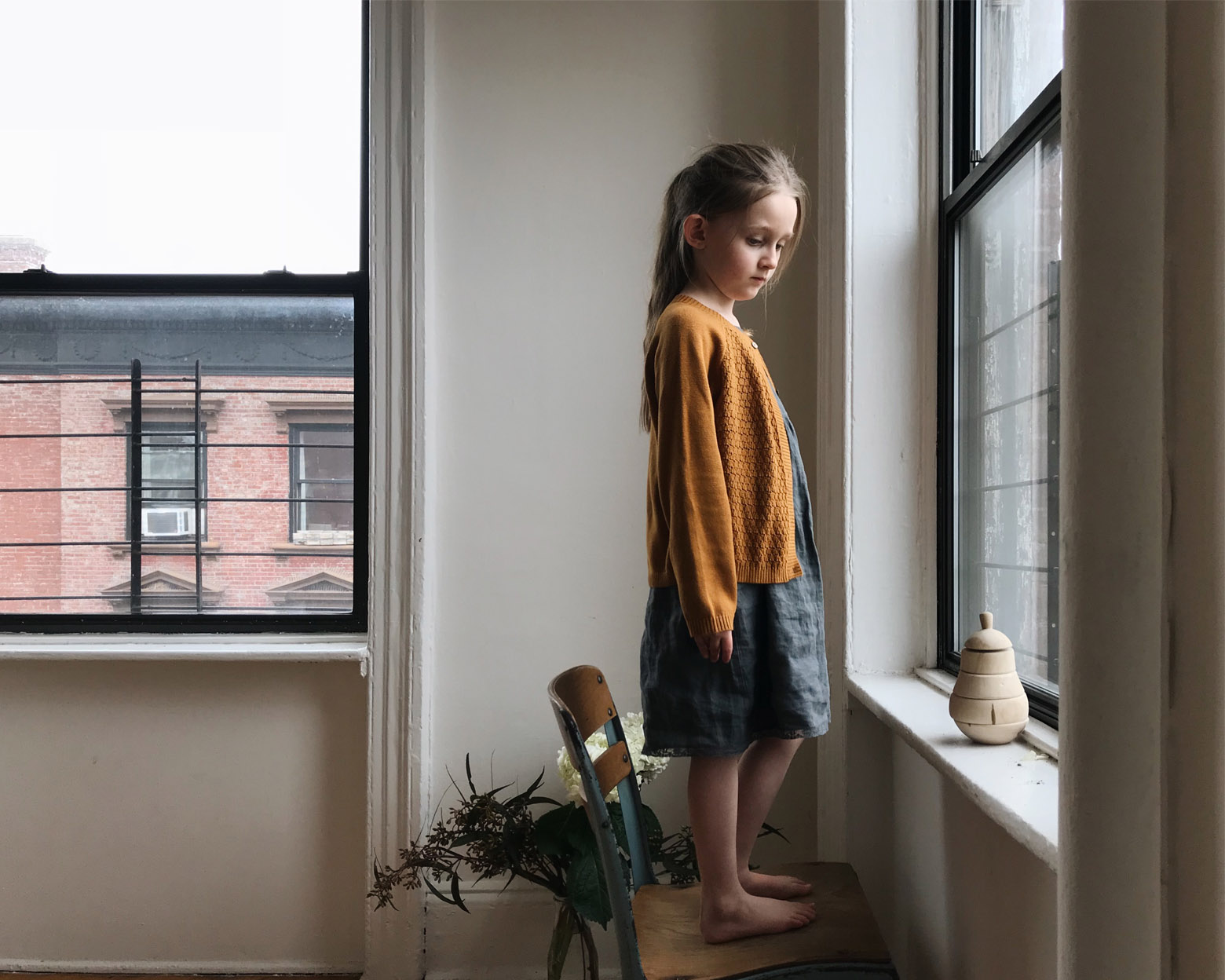
How do you get started with a capsule wardrobe?
Begin by considering the age of the child. A newborn only needs certain essentials in the first days of life. Invest in some quality organic onesies for the season (I love Summer and Storm’s) and organic basics and rompers like these from Goatmilks.
I’ve grown extremely fond of CanadianRain People’sfull-brimmed bonnets. They actually cover the face for the sun and can also be flipped back. If your child is in the younger toddler years, you want to think about how their lives evolves around play. They should be able to move around freely and not feel constrained. I’ve always been a huge fan of rompers, worn alone in the summer and layered with tights or knee high socks. We love Collegien because of the outstanding quality and durability.
As a child gets older, their sense of self begins to develop and they want to make choices. I tend to stick to linen and organic cottons for both my boy and daughter. Children can still move and play. Buy basics and expand from there based on what they love and what you love. We never have been to the mall.
What should you consider every time you add new items to your child’s wardrobe?
Shop ethically, buy responsibly and think about how and where this item was made. Shop small whenever possible, because behind that garment is also the person who is representing it and when you by small you are supporting a small business owner who is running this shop to support her or his family. I am a huge believer in supporting fellow small online shops like mine. There’s a lot of talk of ‘we are all in this together’ and not a lot of action. I always support other women and their small shops.
How do you stick with it?
I think the more research and education you teach yourself the more conscious your choices become over time. After I had my first son, I went back to school to study holistic nutrition, that education set the stage for what went into our bodies, as well as what went on to our bodies. Our clothing shift happened their. I went through a phase years ago where I was buying cheap pajamas for my kids. Now I’m only buying organic cotton or my daughter sleeps in my old T-shirts.
On Sundays, my daughter and I often vintage shop on antique row here in Connecticut and here we have found some amazing pieces and she also loves her Soor Ploom’s essentials.
Which 5 items do you think should be in any little boy or girl’s wardrobe?
A great pair of merino wool thermals. We love Chasing Windmillsthat can be worn all year long.
Simple essentials in good quality like the ones from Soor Ploom. They’re amazing for layering under dresses and sweaters, sleep, play and lounging.
A sturdy pair of rain boots – We go for a subtle color like black or army green because they’re so versatile and I normally choose brands like Hunter or Aigle. A great pair of boots can carry every child on adventures through the woods, playground and down to the ocean and they’re durable enough to be passed down to a sibling.
A high quality cardigan or sweater.Omibia takes her designs to another level with organic, ethical design, and Mouse in the House Shop designs the most gorgeous wool sweaters that are ethically made. I’ll be bringing these in for Fall 2018.
A crisp, white cotton poplin tee. Just like adults, a beautiful white blouse or kurta popover can be worn alone or layered with any of these other pieces for boys and girls.
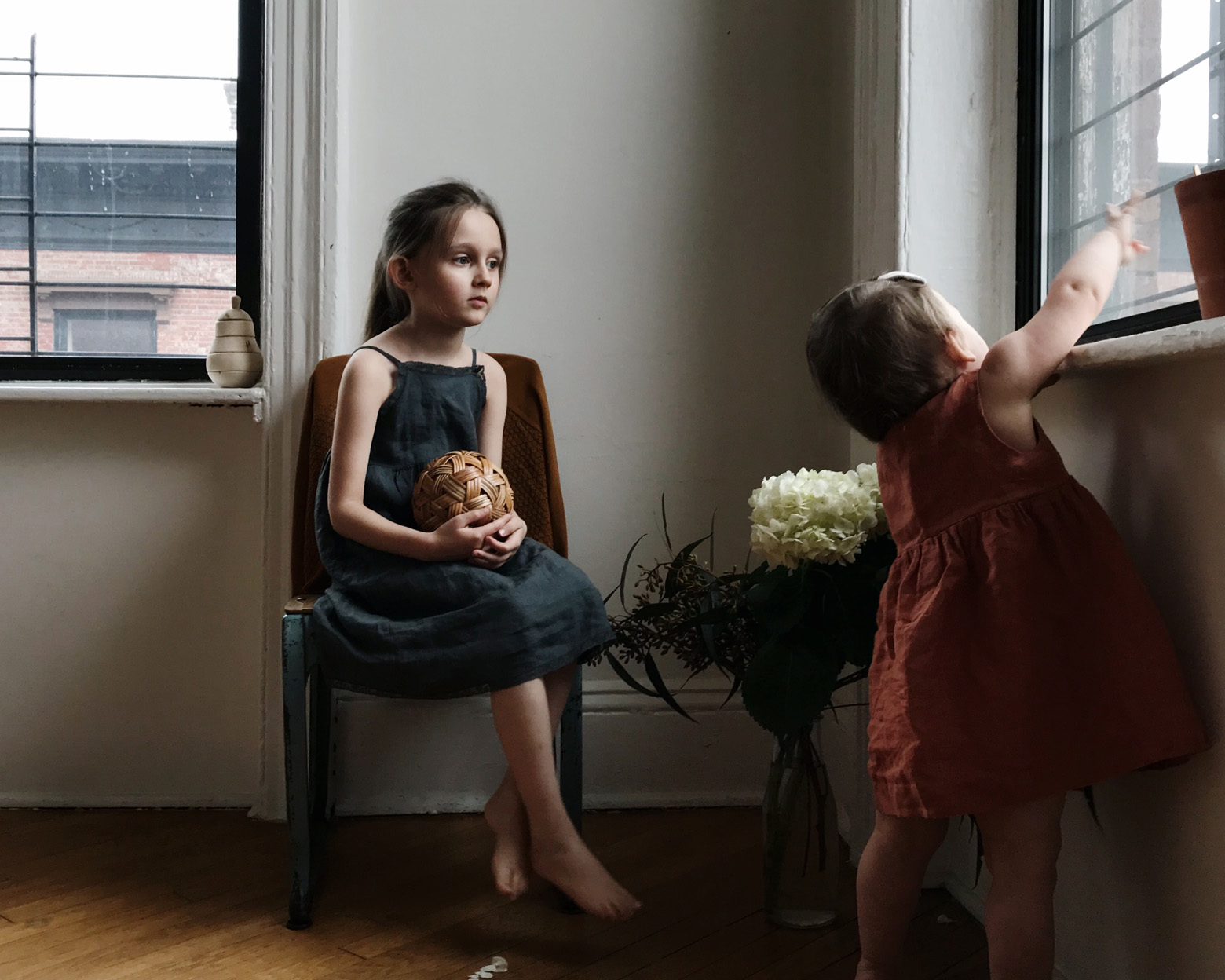
How can you justify buying expensive clothes for a child who will outgrow it in a few seasons?
I get asked this question so much, I wish I could teach a class or something about the farmer who grows the cotton and tends to the sheep. About the workers who spin the wool or thread into cloth, about the design process from drawing to production to fittings, to labor, to fair wages and small batch production. The importance of all of these things and the ultimate price we pay for a well made garment would justify all of this. To understand that a garment is a work of art. The opposite of fast fashion, which is just as the name says, a piece that is made on a machine, in a factory by hard working laborers that are not being paid fair wages and perhaps live in poverty themselves. It’s a subject that makes my heart ache when I see parents buy cheap stuff for their children so they can have ‘more’ clothing or more stuff, thinking they are saving a quick buck, when ultimately if they shopped wisely, bought well-made clothing at perhaps a higher price point, their children may have less clothing, but have gained so much more by learning the valuable lesson of less is more. I could probably do a whole book or podcast on this subject.
How do you preserve your children’s heirloom pieces?
First off you should buy some packs of unbuffered acid free tissue.
Make sure each garment is clean before storing.
Wrap up your garments for storage in a clean area, free from food or liquids.
Chose a cool, dry room- preferably a dark closet- for storage.
Type up a list of the items in each box with any relevant information. Print, and file it in the container.
Don’t overpack.
Label your storage container with the date it was last sealed.
Check storage containers yearly, to be sure that your materials are free from pests/ growth.
(Pick a time of year that you’ll remember, like the first day of spring.) Use a vacuum with an attachment to carefully vacuum around the corners of the container if there is any dust or dirt.
Do not place mothballs or sachets of any kind in your storage container.
All clothes from Cloth.
Thanks for the wonderful article